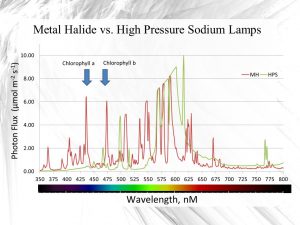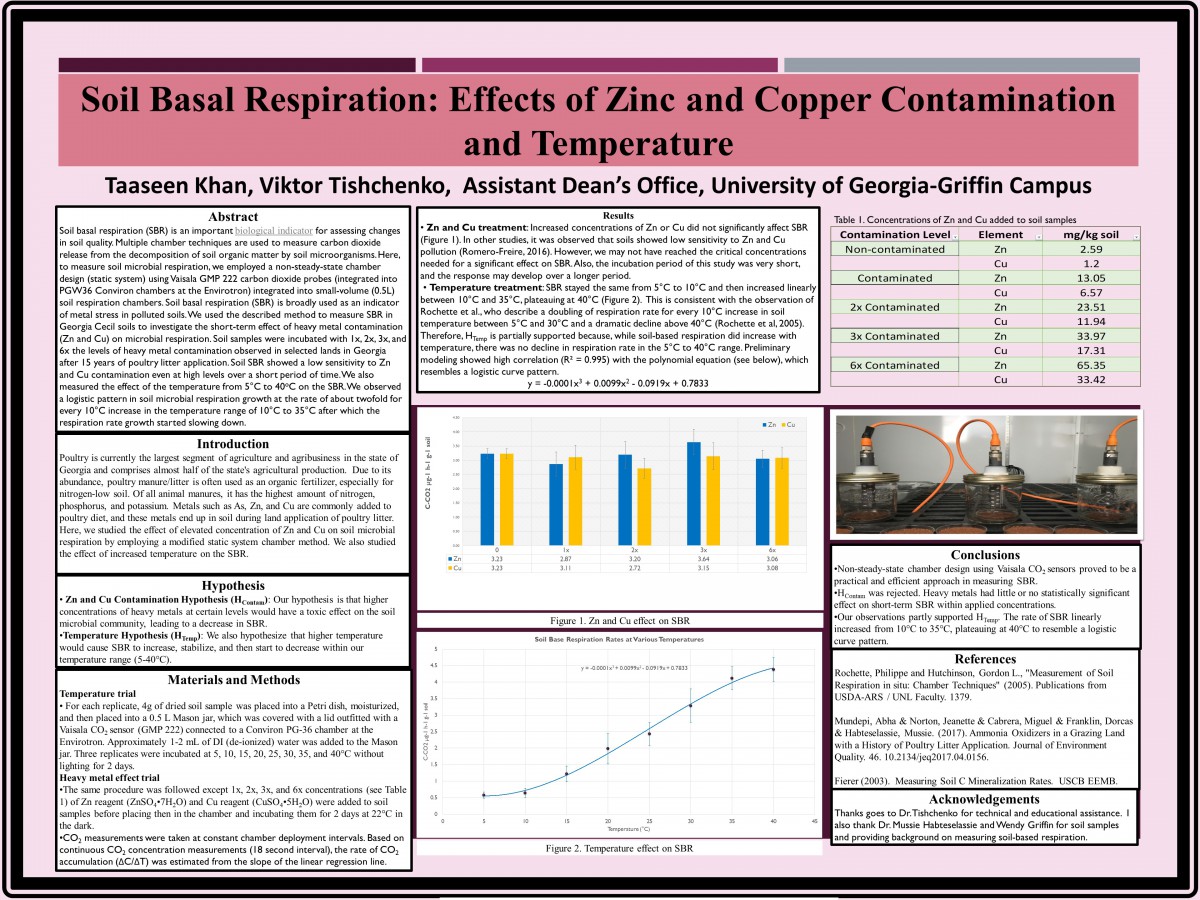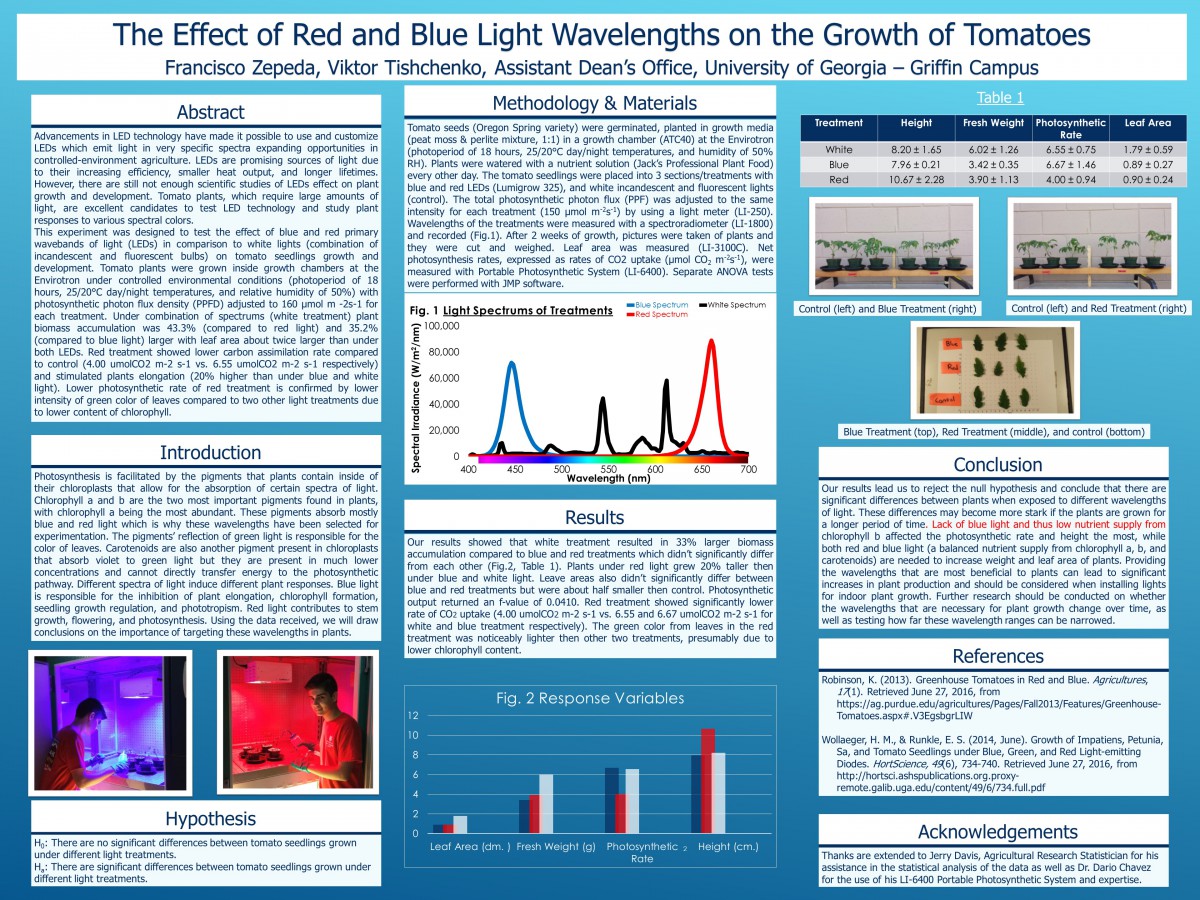
Photosyntetically Active Radiation Spectrum Analysis of High intensity discharge radiation sources in Coviron controlled environment growth chambers.
Jacques Clemons Young Scholar, Dr. Viktor Teschenko

 Environment control is essential in conducting plant culture experiments where temperature, humidity, light, carbon dioxide content and other conditions need to be regulated. The radiation sources should provide necessary wavelength range and intensity to stimulate all photosensitive reactions in plants. Spectroradiometer (Apogee, EPP2000 C-50) have been used to study photosyntetically active radiation (PAR) spectrum emitted by metal halide (MH) and high pressure sodium (HPS) high intensity discharge (HID) lamps used in CG-72 Conviron growth chambers. Spectrum range and photosynthetic photon flux (PPF) changes caused by lamps and barriers aging were analyzed. HPS lamps have insufficient blue wavelength emission at low PPF to satisfy plant needs. HPS in conjunction with MH lamps provide sufficient PAR spectral balance and energy supply. Lamps lost about 25% of their radiation output after 10K operation hours. Barriers aging caused ~ 11% loss after 17 years of operation. Radiation source monitoring is essential for guiding lamp replacement recommended after 20% loss in radiation and barriers replacement recommended after 10% loss of transmittance.
Environment control is essential in conducting plant culture experiments where temperature, humidity, light, carbon dioxide content and other conditions need to be regulated. The radiation sources should provide necessary wavelength range and intensity to stimulate all photosensitive reactions in plants. Spectroradiometer (Apogee, EPP2000 C-50) have been used to study photosyntetically active radiation (PAR) spectrum emitted by metal halide (MH) and high pressure sodium (HPS) high intensity discharge (HID) lamps used in CG-72 Conviron growth chambers. Spectrum range and photosynthetic photon flux (PPF) changes caused by lamps and barriers aging were analyzed. HPS lamps have insufficient blue wavelength emission at low PPF to satisfy plant needs. HPS in conjunction with MH lamps provide sufficient PAR spectral balance and energy supply. Lamps lost about 25% of their radiation output after 10K operation hours. Barriers aging caused ~ 11% loss after 17 years of operation. Radiation source monitoring is essential for guiding lamp replacement recommended after 20% loss in radiation and barriers replacement recommended after 10% loss of transmittance.
Versatile Irrigation System for the Envirotron Controlled Environment Growth Chambers
Gavin Lamberth – Young Scholar
Dr. Viktor Tishchenko, Envirotron Manager, University of Geogia-Griffin
Controlled environment growth chambers are widely used in plant culture experiments where temperature, humidity, light, carbon dioxide content and other conditions need to be regulated. Recently, justification for automatic irrigation systems installation in enclosed environments has increased as efficiency, uniformity, and flexibility of such systems have improved. An automatic drip irrigation system with two separate soil-water potential sensor triggered and timer-based configurations have been designed, built, and tested at the Envirotron. The irrigation system was integrated into one of the Conviron growth chambers (CG-72) and tested on tomato plants growing in potting soil medium. A uniform water supply to each nozzle (with 8.9% variability) has been achieved by connecting identical length tubes, using pressure compensators, and the same outflow elevation. Automatic irrigation system testing showed multiple advantages compared to manual watering: automatic control, simultaneous water supply to all containers, high uniformity, and minimal medium disturbance. The sensor-based automatic irrigation configuration demonstrated better water use efficiency due to direct tensiometer-based response to plants’ water needs, and is recommended for installation in controlled environment growth chambers.

